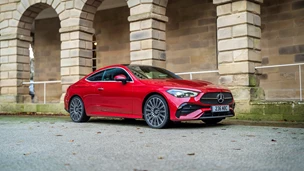The most curious aspect of the new XJ range is the contrast between its principal technological advance (in the form of an aluminium monocoque) and its traditional appearance (still very close to that of XJs from thirty years ago).I'm all for technological advances as long as there are good reasons behind them. Jaguar's choice of aluminium as a structural material is based on a desire for lower weight and increased strength, and you can't argue with that. I also like to see new designs, but Jaguar has a very strong case for sticking with the decades-old basic shape of the XJ. It's simply one of the most elegant pieces of styling work in the motor industry, combining presence, grace and a sense of moving forwards even when the car is actually sitting still.The latest update - which, however much effort was involved, has the air of leaving well alone and only attending to minor matters - is generally a fine piece of work. The combination of new rear light clusters and rather a lot of chrome makes the back a little too fussy for my taste, but on the whole this is a very handsome car which I feel good about having parked outside my house.In terms of interior ambience, Jaguar is pretty much the leader of the pack. Once again there is nothing especially new about the inside of the XJ, which is fine because there was nothing especially wrong with it before. Wherever you sit, you're conscious of being in a very pleasant environment. What is new is that for back seat passengers that environment is now comfortably large. Other XJs were seriously cramped in the rear, but not this one.The car tested here is the entry-level model, fitted with the three-litre V6 engine rather than any of the large V8s which are also available. It is therefore also the slowest in the range, but thanks to the relatively low weight it's quite quick enough for the purposes of most owners. I doubt that these purposes would ever include high-performance driving, since it's clear from the moment you begin your first journey that this is a car for wafting rather than hustling, though it's reasonably agile for its size.Some of that agility seems to have been achieved at the expense of ride quality. I'm talking in relative terms here - at all times the XJ feels like luxury transport. But it's not especially happy over small bumps, and it can lurch slightly over large ones.Over one particularly challenging road near where I live it seemed to spread the effect of the various crests and dips slowly and without sudden movements, rather than trying to persuade the occupants that they didn't exist at all. That's fair enough up to a point, but when two crests occur within the space of a few yards the XJ is still dealing with the first one as it encounters the second, and a moment of uncomfortable confusion results.Jaguar has gone to some lengths to point out that the new XJ is not over-burdened with user-hostile technology, an only slightly veiled reference to the iDrive system on the BMW 7-Series. Sure enough, there is nothing complicated to get your head round, but I think Jaguar is either going down the wrong road - or perhaps has not gone down that road far enough - with its electronic parking brake.It could hardly be simpler to operate. Flick a switch where you might expect a normal handbrake lever to be and the parking brake comes on. You can't release it manually, but it will release of its own accord next time you move off. The snag with the system is that it has to feel the car trying to move before it lets go, and when it does the brakes go from full-on to full-off very quickly, causing a minor jolt which to some extent undermines the sense of luxury.You can sort this out yourself by covering the brake pedal with your left foot and releasing it gradually. A chauffeur would no doubt do this, but it adds a level of complexity which is surely inappropriate for an owner-driver.Well, if that's the worst I can say about the new XJ things can't be too bad. When I think about this car in the coming months I'm more likely to remember how pleasing to the senses it was, both inside and out, and how splendid it was to drive in most circumstances. And I probably won't forget the fact that, admittedly without using its performance potential very often, I achieved what the trip computer assured me was over 30mpg on a week-long test. Even in a car of this class, that must be at least slightly important to anyone who buys the base model.Second opinion: In this class none of its rivals can match Jaguar for interior layout, leather and woodwork. They keep trying, but in my opinion they're all simply playing catch-up. One of the major improvements is that the J-gate - now linked with a six-speed ZF automatic transmission - has at last been properly styled in, with its previously far too wide movements reduced. It now looks and feels like the work of a professional design team instead of a bunch of amateurs. There must have been some pressure on Jaguar to move on from the familiar long-bonnet long-boot approach, but full marks to the company for deciding instead on a 21st-century expression of a classic design. And while some owners may hanker after a V8, the power-to-weight ratio of the three-litre V6 is impressive. Ross Finlay. Engine 2967cc, 6 cylinders Power 240bhp Transmission 6-speed automatic Fuel/CO2 27.0mpg / 249g/km Acceleration 0-62mph: 7.8 seconds Top speed 145mph Price £39,000 Details correct at publication date

Our Rating



